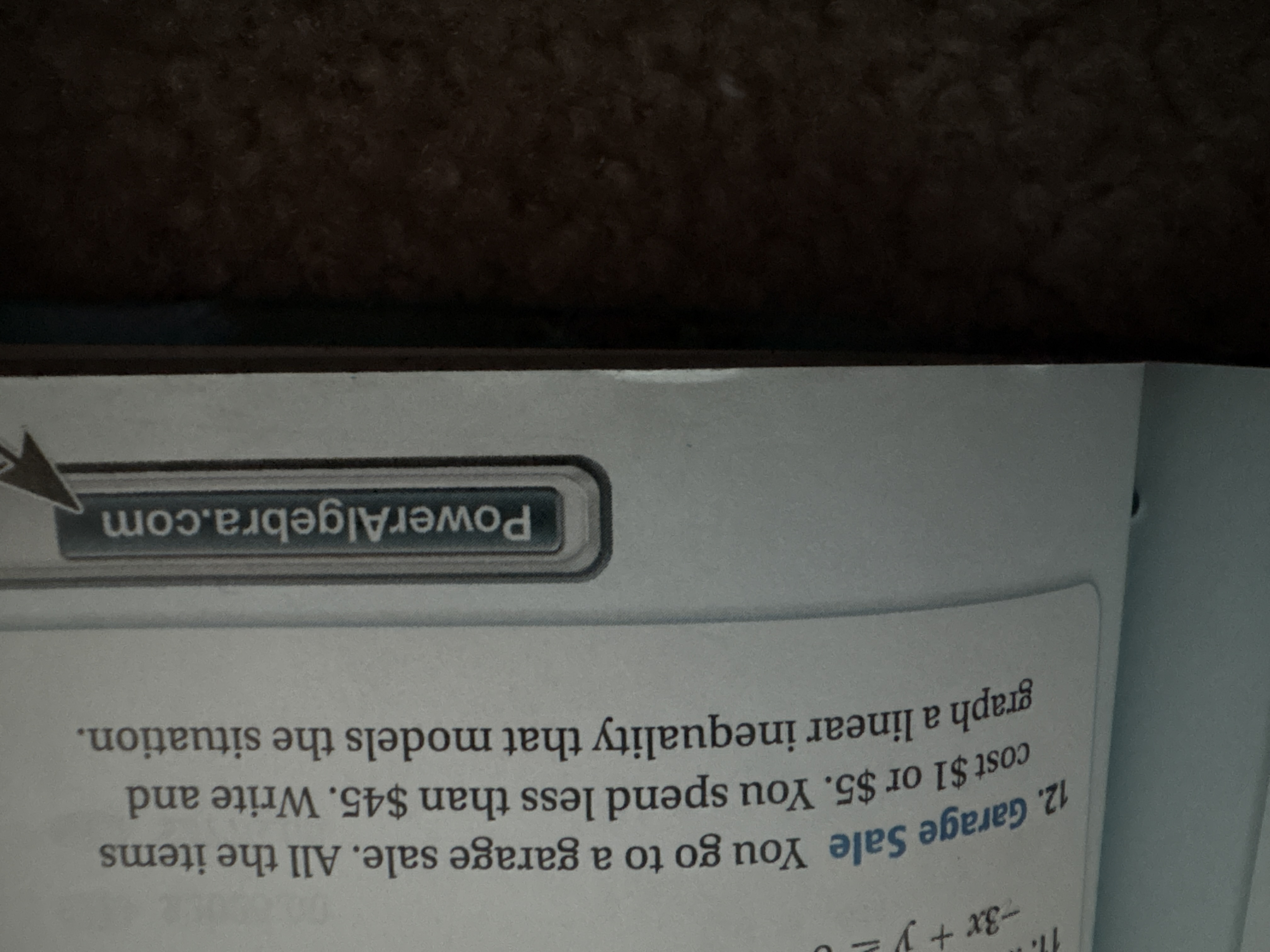You go to a garage sale. All the items cost $1 or $5. You spend less than $45. Write and graph a linear inequality that models the situation.

Understand the Problem
The question requires understanding how to formulate a linear inequality based on a word problem scenario and then graph it. In this scenario, items at a garage sale cost either $1 or $5, and the total spending has to be less than $45. The task is to define the variables, write the inequality representing the situation, and then graph the solution.
Answer
$x + 5y < 45$. Graph is a dashed line through (45,0) and (0,9) with the region below the line shaded, restricted to the first quadrant.
Answer for screen readers
The inequality that models the situation is $x + 5y < 45$, and its graph is a dashed line through (45, 0) and (0, 9), with the area below the line shaded in the first quadrant.
Steps to Solve
- Define the variables
Let $x$ be the number of $1 items purchased and $y$ be the number of $5 items purchased.
- Formulate the inequality
The total cost of the items can be represented as $1x + 5y$. Since the total spending is less than $45, the inequality is: $$ x + 5y < 45 $$
- Solve for y to express the inequality in slope-intercept form
This makes it easier to graph. $$ 5y < -x + 45 $$ $$ y < -\frac{1}{5}x + 9 $$
- Determine the intercepts
To graph, find the x and y intercepts. For the x-intercept (when $y=0$): $$ x + 5(0) = 45 $$ $$ x = 45 $$ For the y-intercept (when $x=0$): $$ 0 + 5y = 45 $$ $$ y = 9 $$
- Graph the inequality
Plot the points (45, 0) and (0, 9) on a graph. Draw a dashed line through these points, because the inequality is strict ($<$). Shade the region below the line, since $y$ is less than $-\frac{1}{5}x + 9$. Since we cannot buy a negative number of items, we only consider the first quadrant (where $x \geq 0$ and $y \geq 0$).
The inequality that models the situation is $x + 5y < 45$, and its graph is a dashed line through (45, 0) and (0, 9), with the area below the line shaded in the first quadrant.
More Information
The dashed line indicates that combinations lying exactly on the line are not solutions to the inequality. For example, if you buy 45 items that cost $1, you will spend $45, which is NOT less than $45.
Tips
- Using a solid line instead of a dashed line for the graph of the inequality: This is because the inequality is strict ($<$), meaning the values on the line are not included in the solution.
- Shading the wrong region: Always check which side to shade by testing a point (e.g., (0, 0)) in the original inequality. If the point satisfies the inequality, shade the side containing that point.
- Forgetting the context of the word problem: The number of items cannot be negative, so it's important to only graph quadrant 1 where $x \geq 0$ and $y \geq 0$.
AI-generated content may contain errors. Please verify critical information